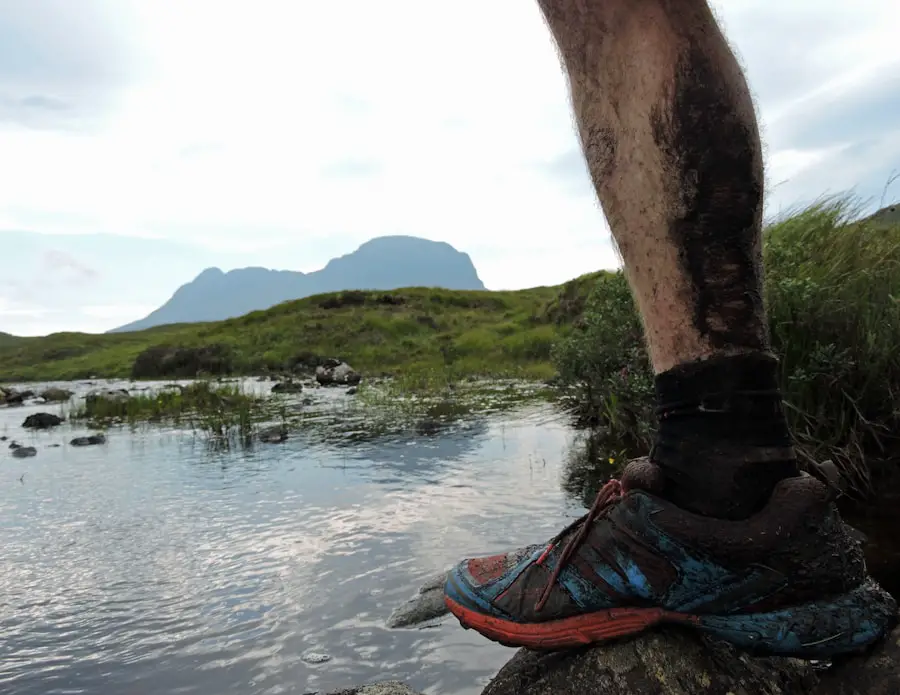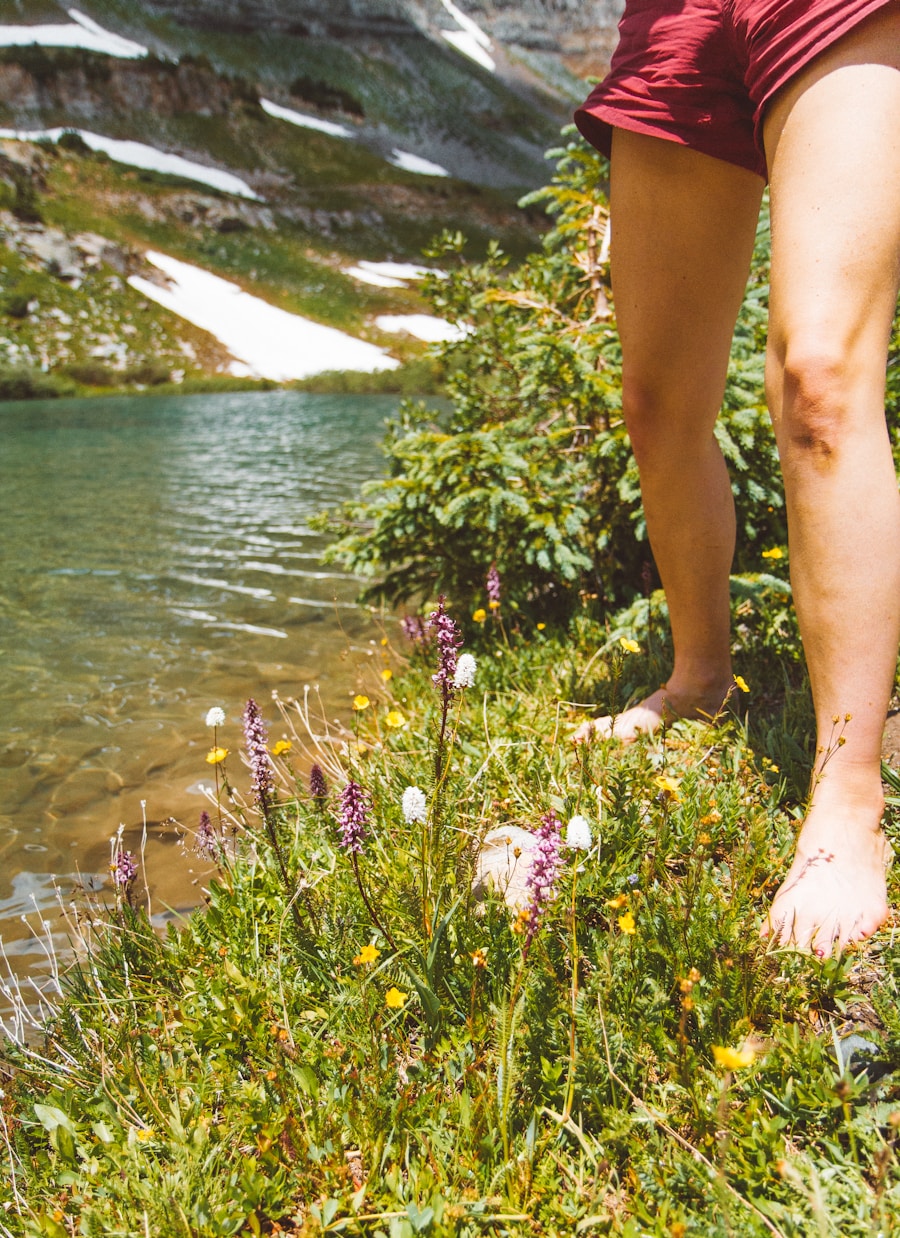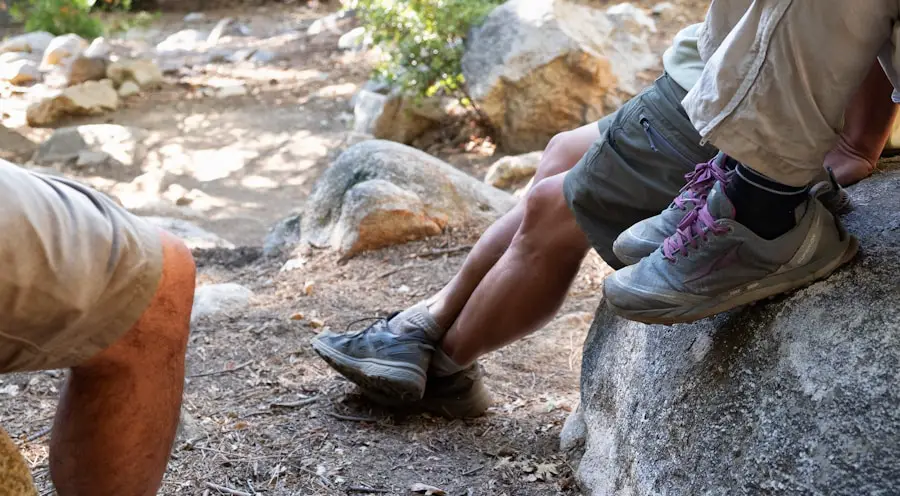Hiking is a popular outdoor activity that offers numerous physical and mental health benefits, but it can also take a toll on your feet. The act of traversing uneven terrain, climbing steep inclines, and navigating rocky paths places significant stress on the feet. Each step can lead to various foot-related issues, including blisters, calluses, and even more serious conditions like plantar fasciitis or tendonitis.
The impact of hiking on your feet is multifaceted; it involves not only the physical strain of the activity but also the environmental factors such as temperature, moisture, and the type of terrain. The anatomy of the foot is complex, consisting of bones, muscles, tendons, and ligaments that work together to provide support and mobility. When hiking, these structures are subjected to repetitive stress and strain.
For instance, the arch of the foot plays a crucial role in absorbing shock and distributing weight. However, prolonged hiking without adequate support can lead to overuse injuries. Additionally, the weight of a backpack can exacerbate these issues by altering your gait and increasing pressure on certain areas of your feet.
Understanding these dynamics is essential for any hiker looking to enjoy the trails while minimizing discomfort and injury.
Key Takeaways
- Hiking can have a significant impact on your feet, leading to soreness and potential injuries if not properly cared for.
- Choosing the right footwear for hiking is crucial to provide support, stability, and protection for your feet on the trail.
- After a hike, it’s important to practice post-hike foot care to soothe sore feet, including proper cleaning, moisturizing, and elevation.
- Rest and recovery are essential for foot health, allowing time for muscles and tissues to heal and prevent overuse injuries.
- Utilizing foot soaks and massages can provide relief and relaxation for tired, achy feet after a long hike.
Choosing the Right Footwear for Hiking
Selecting appropriate footwear is one of the most critical decisions a hiker can make. The right shoes or boots can significantly enhance comfort and performance while reducing the risk of injury. When choosing hiking footwear, consider factors such as fit, support, traction, and waterproofing.
A proper fit is paramount; shoes that are too tight can cause blisters and pinched nerves, while those that are too loose may lead to instability and increased risk of ankle sprains. It’s advisable to try on hiking shoes at the end of the day when your feet are slightly swollen to ensure a comfortable fit during long hikes. Support is another vital aspect to consider.
Hiking shoes should provide adequate arch support and cushioning to absorb impact. For those who plan to hike on rugged terrain or carry heavy loads, high-top boots may offer additional ankle support. Traction is equally important; shoes with a good tread pattern will help prevent slips and falls on slippery or uneven surfaces.
Additionally, waterproof materials can keep your feet dry in wet conditions, which is essential for maintaining comfort and preventing blisters. Brands like Merrell, Salomon, and Columbia offer a range of options tailored to different hiking conditions and personal preferences.
Post-Hike Foot Care: Tips for Soothing Sore Feet

After a long day on the trails, your feet may feel fatigued and sore. Implementing a post-hike foot care routine can significantly alleviate discomfort and promote recovery. One effective method is to soak your feet in warm water mixed with Epsom salts.
The magnesium sulfate in Epsom salts can help reduce inflammation and relax tired muscles. Soaking for about 15-20 minutes can provide immediate relief, especially if you add essential oils like lavender or peppermint for their soothing properties. In addition to soaking, gentle massage can be incredibly beneficial for sore feet.
Using your hands or a massage ball, focus on areas that feel particularly tight or tender. Applying pressure to the arches, heels, and balls of your feet can help release tension and improve circulation. If you have access to a foam roller or a specialized foot roller, these tools can also aid in relieving muscle tightness.
Incorporating these practices into your post-hike routine not only helps soothe sore feet but also promotes overall foot health by encouraging blood flow and flexibility.
The Importance of Rest and Recovery for Your Feet
| Benefits of Rest and Recovery for Your Feet | Statistics |
|---|---|
| Reduction in Injury Risk | Research shows that adequate rest and recovery can reduce the risk of foot and ankle injuries by up to 50%. |
| Improved Performance | Studies have found that athletes who prioritize rest and recovery experience a 20% improvement in their foot and ankle strength and flexibility. |
| Prevention of Overuse Injuries | Over 60% of overuse injuries in the feet and ankles can be prevented with proper rest and recovery strategies. |
| Enhanced Healing | Rest and recovery allow for better circulation and tissue repair, leading to a 30% faster healing process for foot-related injuries. |
Rest is an often-overlooked component of foot care that plays a crucial role in recovery after hiking. Just as muscles need time to repair after strenuous exercise, so do the structures in your feet. Overworking your feet without allowing adequate recovery time can lead to chronic pain and injuries that may sideline you from future hikes.
It’s essential to listen to your body; if you experience persistent pain or discomfort after a hike, consider taking a break from strenuous activities to allow your feet to heal. Incorporating rest days into your hiking schedule can also enhance your overall performance. On days when you’re not hiking, engage in low-impact activities such as swimming or cycling to maintain fitness without putting excessive strain on your feet.
Additionally, elevating your feet after a hike can help reduce swelling and improve circulation. Simply lying down with your feet propped up on a pillow for 15-20 minutes can make a noticeable difference in how your feet feel afterward.
Utilizing Foot Soaks and Massages for Relief
Foot soaks and massages are not just indulgent luxuries; they are practical methods for relieving foot pain and promoting recovery after hiking. A warm foot soak can be enhanced with various ingredients that provide therapeutic benefits. For example, adding apple cider vinegar can help soften calluses and reduce foot odor due to its antibacterial properties.
Alternatively, herbal infusions such as chamomile or rosemary can provide additional relaxation benefits while soothing tired muscles. Massaging your feet after a hike is equally important for recovery. You can use your fingers to apply pressure along the arches and heels or utilize tools like tennis balls or massage sticks for deeper tissue work.
Focus on areas that feel particularly tense or sore; this targeted approach can help alleviate discomfort and improve flexibility in the foot muscles. Regularly incorporating these practices into your post-hike routine not only aids in recovery but also enhances overall foot health by promoting better circulation and reducing muscle tightness.
Incorporating Stretching and Strengthening Exercises for Your Feet

To maintain healthy feet and prevent injuries while hiking, incorporating stretching and strengthening exercises into your routine is essential. Stretching helps improve flexibility in the muscles and tendons of the feet, which can reduce the risk of strains and sprains during hikes. Simple stretches such as toe flexes, calf stretches against a wall, or seated forward bends can be effective in promoting flexibility.
Holding each stretch for 15-30 seconds allows the muscles to relax and lengthen. Strengthening exercises are equally important for building resilience in the foot muscles. Activities such as toe raises, heel walks, or using resistance bands to perform ankle dorsiflexion can enhance muscle strength and stability.
Additionally, practicing balance exercises like standing on one leg or using a balance board can improve proprioception—your body’s ability to sense its position in space—which is crucial for navigating uneven terrain while hiking. By integrating these exercises into your regular fitness routine, you can enhance your foot strength and flexibility, ultimately leading to more enjoyable hiking experiences.
Nutrition and Hydration for Foot Recovery
Nutrition plays a vital role in recovery after hiking, particularly when it comes to supporting foot health. Consuming a balanced diet rich in vitamins and minerals can aid in tissue repair and reduce inflammation. Foods high in omega-3 fatty acids—such as salmon, walnuts, and flaxseeds—are known for their anti-inflammatory properties and can help alleviate soreness in overworked muscles.
Additionally, incorporating plenty of fruits and vegetables provides essential antioxidants that combat oxidative stress caused by physical activity. Hydration is another critical aspect of recovery that should not be overlooked. Dehydration can lead to muscle cramps and fatigue, exacerbating any discomfort you may feel in your feet after hiking.
It’s essential to drink water before, during, and after your hike to maintain optimal hydration levels. Electrolyte-rich beverages can also be beneficial if you’ve been sweating heavily during your hike; they help replenish lost minerals that are crucial for muscle function. By prioritizing nutrition and hydration, you set the stage for effective recovery and better overall foot health.
Seeking Professional Help for Persistent Foot Pain
While many foot issues related to hiking can be managed with self-care strategies, persistent pain should not be ignored. If you experience ongoing discomfort despite implementing rest, proper footwear, stretching exercises, and post-hike care routines, it may be time to seek professional help. A podiatrist or orthopedic specialist can provide a thorough assessment of your foot health and identify any underlying conditions that may require treatment.
In some cases, custom orthotics may be recommended to provide additional support tailored specifically to your foot structure. Physical therapy may also be beneficial for addressing specific issues such as tendonitis or plantar fasciitis; therapists can guide you through targeted exercises designed to strengthen weak areas while improving flexibility. Early intervention is key; addressing foot pain promptly can prevent more serious complications down the line and ensure that you continue enjoying hiking without limitations.
If you’re looking for ways to treat sore feet after a long hike, you may want to check out this article on how far bees fly from the hive. Understanding the incredible distance these tiny insects can cover may give you some perspective on the importance of taking care of your feet after a strenuous hike. Additionally, knowing the best time to travel to different destinations, such as Norway or Argentina, can help you plan your hiking trips accordingly. Check out these articles on the best time to travel to Norway and the best time to travel to Argentina for more travel tips and insights.
FAQs
What causes sore feet after hiking?
Sore feet after hiking can be caused by a variety of factors including wearing ill-fitting footwear, walking on uneven terrain, overexertion, or not taking enough breaks during the hike.
How can I prevent sore feet while hiking?
To prevent sore feet while hiking, it is important to wear properly fitting and supportive footwear, take regular breaks to rest and stretch your feet, and gradually increase the intensity and duration of your hikes to build up foot strength.
What are some ways to treat sore feet after hiking?
Some ways to treat sore feet after hiking include soaking your feet in warm water, using ice packs to reduce inflammation, elevating your feet, and gently massaging the sore areas. Over-the-counter pain relievers can also help alleviate discomfort.
When should I seek medical attention for sore feet after hiking?
If the soreness in your feet persists for more than a few days, is accompanied by severe swelling or bruising, or if you notice any signs of infection such as redness, warmth, or discharge, it is important to seek medical attention from a healthcare professional.
